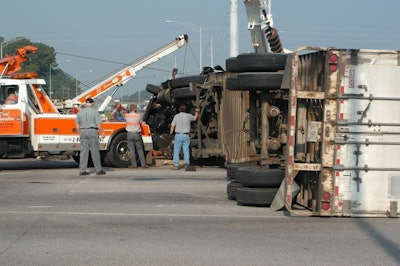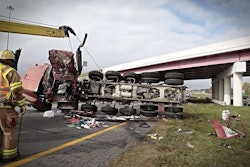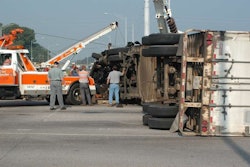 FMCSA says it didn’t receive enough information from carriers or insurers about costs and benefits of increasing liability coverage minimums required of motor carriers, leading it to nix the rulemaking. FMCSA concluded in a 2014-released study that current insurance minimums were insufficient in covering costs of today’s crashes and medical expenses. Carrier groups disagree with that assertion.
FMCSA says it didn’t receive enough information from carriers or insurers about costs and benefits of increasing liability coverage minimums required of motor carriers, leading it to nix the rulemaking. FMCSA concluded in a 2014-released study that current insurance minimums were insufficient in covering costs of today’s crashes and medical expenses. Carrier groups disagree with that assertion.The Federal Motor Carrier Safety Administration is slated Monday to officially withdraw a rulemaking intended to explore the pros and cons of increasing liability insurance minimums for motor carriers. The agency says a lack of data from key stakeholders, such as insurance providers and carriers, led to the withdrawal of the rule.
The Advanced Notice of Proposed Rulemaking, published Nov. 28, 2014, sought input from carriers, brokers, shippers, insurers and others about how increasing the current $750,000 minimum required of carriers would impact insurance premiums, ability to obtain insurance and more. FMCSA was tasked by Congress in the 2012 MAP-21 highway bill to study whether an increase was needed. Current limits were set in the mid-1980s, and groups have argued in recent years they’re too low to cover the costs of today’s crashes and medical expenses. FMCSA in a study released prior to the ANPRM concluding current coverage minimums hadn’t kept up with inflation or rising liability costs.
Two of the industry’s top lobbyists, the American Trucking Associations and the Owner-Operator Independent Drivers Association, opposed the rulemaking. Both said an increase was unnecessary, arguing just 1 percent of crashes exceed $750,000 in liability claims and that most trucking companies carry liability insurance of $1 million or more. They also said a mandatory increase could drive premiums up and and push smaller carriers out of business.
The ANPRM sought to quantify those impacts by surveying carriers and insurers about the costs of premiums at various liability coverage levels, how much those costs could increase if the agency raised the minimum, how often crashes exceed the minimum, how often carriers go bankrupt due to crashes whose costs exceed coverage and more.
Ultimately, the agency says it received too little feedback, particularly from insurance companies, to proceed with a rulemaking. The publication of the notice on Monday will end the rulemaking.
“Commenters did not provide sufficient cost or benefit data and the agency was unable to otherwise obtain sufficient data on industry practice with respect to the level of liability limits in excess of the agency’s minimum financial responsibility requirements, the cost of such premiums and the frequency of, and the amount by which bodily injury and property damage claims exceed policy liability limits,” the agency wrote. “The anecdotal and hypothetical data provided by commenters are not sufficient to allow the agency to perform a systematic cost-benefit analysis that would be required to raise motor carrier minimum financial responsibility through a rulemaking.”










